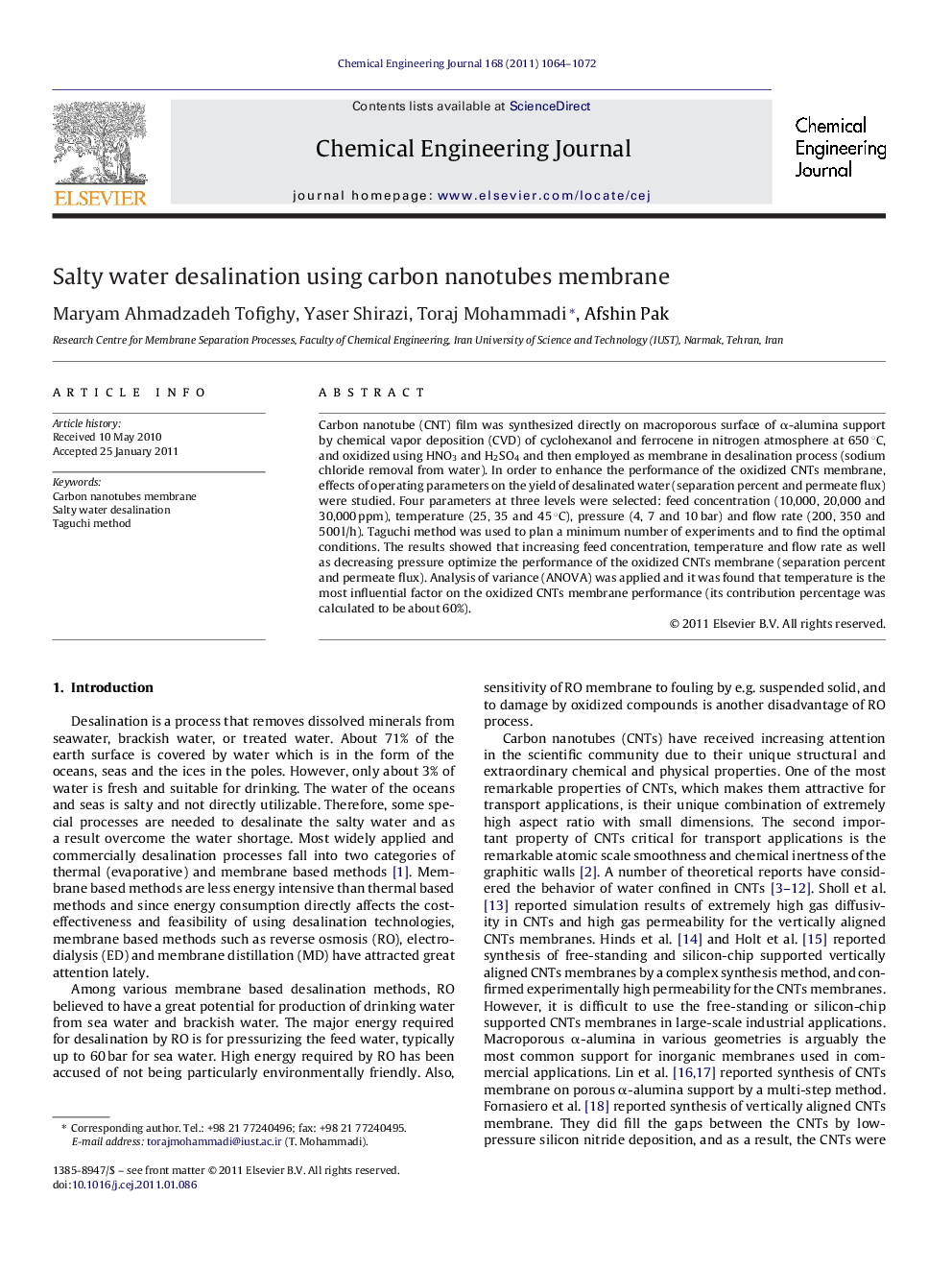| Article ID | Journal | Published Year | Pages | File Type |
|---|---|---|---|---|
| 151157 | Chemical Engineering Journal | 2011 | 9 Pages |
Carbon nanotube (CNT) film was synthesized directly on macroporous surface of α-alumina support by chemical vapor deposition (CVD) of cyclohexanol and ferrocene in nitrogen atmosphere at 650 °C, and oxidized using HNO3 and H2SO4 and then employed as membrane in desalination process (sodium chloride removal from water). In order to enhance the performance of the oxidized CNTs membrane, effects of operating parameters on the yield of desalinated water (separation percent and permeate flux) were studied. Four parameters at three levels were selected: feed concentration (10,000, 20,000 and 30,000 ppm), temperature (25, 35 and 45 °C), pressure (4, 7 and 10 bar) and flow rate (200, 350 and 500 l/h). Taguchi method was used to plan a minimum number of experiments and to find the optimal conditions. The results showed that increasing feed concentration, temperature and flow rate as well as decreasing pressure optimize the performance of the oxidized CNTs membrane (separation percent and permeate flux). Analysis of variance (ANOVA) was applied and it was found that temperature is the most influential factor on the oxidized CNTs membrane performance (its contribution percentage was calculated to be about 60%).
